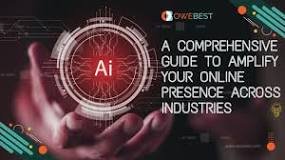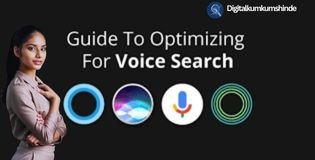Schema Markup 101: Boost Your SEO & Improve Search
Schema Markup 101: Boost Your SEO & Improve Search Schema markup is code you add to your webpage that tells a search engine what your content is about. If you can tell Google the meaning behind your content, it can show your most relevant content to the right people. This can lead to an increase in organic traffic and improved conversions. This is what schema markup looks like: When done correctly, schema markup creates a web of context that helps search engines help you by improving your click-through rate (CTR) and conversions. In this guide, you’re going to learn: Let’s get started. Schema Markup is SEO Schema markup, like on-page, off-page, and technical SEO, is fundamental to helping Google and other major search engines understand your content. At its very core, schema markup is about efficiency. It’s about delivering a set of key and value pairs that search engines can understand explicitly without needing interpretation and natural language processing (NLP). For example, the following script is schema markup for a local business—a dental practice, to be specific. This may seem like a whole lot of code to you right now but in a few scrolls, you’ll start seeing meaning between things. Schema markup is a way of declaring what the content is about, who it is for, and who benefits from publishing said content. When phrased like that, it sounds very familiar to the concept of E-E-A-T doesn’t it? That’s because, in some respects, schema markup helps search engines connect the dots between entities. And if you were to visualize the schema markup from above, this is the relationship Google would understand. Each circle represents an entity. The lines between the entities represent their context and relationship. In fact, if you were to ask ChatGPT how Google would understand the schema markup, it would explain it to you like this: The structured data script describes a dental practice named “Boutique Dental Bondi,” presenting it as both a website and a webpage. It elaborates on various facets of the business and their interrelations. Identity and Online Presence Boutique Dental Bondi is the main entity. It serves dual roles: both as the content of the webpage and as the entity the website represents. It’s designated as a combination of “Dentist” and “LocalBusiness.” The practice’s online presence is reinforced through links to its social media profiles and its Australian Business Register entry. This establishes its credibility and extends its digital footprint. Location and Contact Information The practice’s physical location in Bondi Junction, NSW, Australia, is detailed, providing a complete postal address. This connects the digital identity of the practice with a tangible, real-world location. Contact details like the telephone number and a Google Maps link facilitate direct communication and physical visits, bridging the online and offline interactions with potential clients. Operational Details The opening hours are specified for each day, informing potential clients of when the services are accessible, which is crucial for planning visits. Services Provided The script outlines various dental services offered by Boutique Dental Bondi. These include general and restorative dentistry, cosmetic dentistry, emergency services, and wisdom teeth removal. Each service is linked to more detailed information on their respective web pages, creating a structured pathway for users to explore specific offerings. These services are linked to broader concepts and are available on Wikipedia and Wikidata. This provides users with general context about the services. This helps in understanding what each service entails. So how exactly is schema markup SEO? NLP is far from perfect, and the process of parsing text into meaning is a costly exercise. When you use schema markup to identify entities and their relationship to one another, you’re reducing the amount of work a search engine has to do to compute all that unstructured data. Therefore, you’re literally optimizing the delivery of your content, and hence why using schema markup effectively is SEO. But to make sense of all of this, we must first cover a few key definitions. What Is an Entity and How Do They Help With SEO? Every single thing is a thing. You’re a thing, your business is a thing, and the service or product you offer are things. And each of these things are individual entities. Therefore, anything can be represented by an entity. That is: So what’s the point of entities? Can’t Google figure these things out anyway? If you give Google enough time and build a brand, it’ll figure most things out. But the whole point of SEO is to reduce the lag time. When you use schema markup to tell Google what your content is about, you’re making it easier for Google to connect the dots. Take Backlinko, for example, Google recognizes it as a business entity, as shown in the knowledge panel (left), and compares this to the knowledge panel for Semrush (right). When you put the two side-by-side, it becomes clear the knowledge panel for Semrush has a lot more detail. While most of you would be happy with getting a knowledge panel, both Backlinko and Semrush could improve Google’s understanding of their respective business entities. How? Schema markup is the answer. What Is Schema Markup? In its most basic form, schema markup is a language that machines understand without any interpretation required. Many years ago, the big search engines; Yahoo, Bing, Yandex, and Google came together to create a set of standards that would help them parse the growing internet. Not only did they agree on this standard, they agreed to maintain this new type of language, and thus Schema.org was born. But schema markup isn’t just one language. In fact, there are three languages of schema markup, each with its own rules. Schemas come from ontologies which are made up of individual taxonomies. The people who decide what a taxonomy is and what ontologies exist are academics—they’re not your average marketer. And this is why schema markup, structured data, knowledge graphs, and entities can be such a confusing topic. Here’s the thing. You don’t need to know what a taxonomy is. You don’t
Schema Markup 101: Boost Your SEO & Improve Search Read More »






